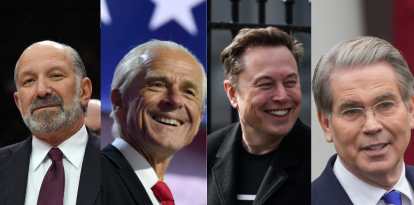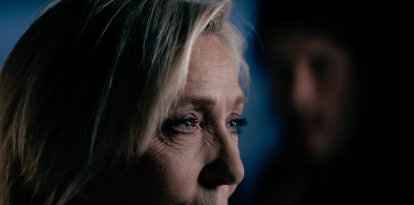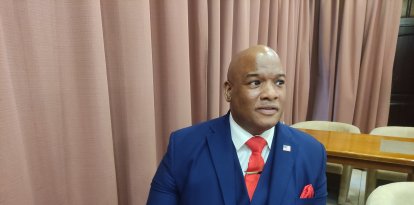Marvel invents Ultrawoke Super Pocahontas
The Disney Plus series, 'What If...?,' presented Kahhorri, a "homage" to the traditional Pocahontas although with overtones of feminist empowerment and indigenous fundamentalism.

(Wikimedia Commons).
One of the last episodes broadcast on Disney Plus in 2023 of the American animated series "What If...?" from Marvel Comics, has turned out to be a lysergic journey through the wild woke utopia. The series involves exploring alternative timelines that show what would happen if historical events occurred differently. It is produced by Marvel Studios Animation, with AC Bradley as lead writer and Bryan Andrews as director. The sixth episode of the second installment is called "What If... Kahhori Reshaped the World?" and in it debuts a new heroine of the Marvel universe, Miss Kahhori. This unprecedented character is a “homage” to the traditional Pocahontas, although with overtones of feminist empowerment and indigenous fundamentalism.
Kahhori belongs to the Mohawk Nation, a tribe of natives who lived between upstate New York and southern Canada, near Montreal. The episode has been created in collaboration with members of the Mohawk Nation, such as historian Doug George and Mohawk language expert Cecelia King, this, according to Marvel Studios, ensures its cultural authenticity:
The plot does not escape the ABC of the most trite woke identity victimhood scripts. The protagonist and her family live in peace in the old world, without even a small dispute within the community until the conquerors arrive and ruin the celebration of harmony and communion of the natives among themselves and with the plant and animal kingdoms respectively. The curious thing is, that despite having so many specialists in Mohawk history and culture on the team, the conquerors who arrive in the lands of the kind Kahhori are not English, French or Dutch but Spanish, an unusual detail due to historical inaccuracy, but necessary for the heroine to face an unexpected archrival.
A succinct explanation of the script becomes necessary at this point: it turns out that the Tesseract, a cube containing an Infinity Stone, can open portals to any part of the universe if used correctly. Due to various circumstances, it falls into the lands of the Mohawk. One day, Kahhori and Wáhta, her brother, are walking through a forest when they hear an explosion. They run back to their village and find their people trapped by Spanish conquistadors. In their attempt to escape, the siblings stumble into a cave where the Forbidden Lake is located, its waters shimmering from the effects of the Tesseract. During the Spanish attack, Kahhori is shot and falls into the lake.
The truth is that when the Tesseract hit the lake, it opened a portal to a celestial world and released all its energy. This granted powers to the lake's inhabitants, so Kahhori, upon falling into it, is imbued with a variety of superpowers. She is greeted by Atahraks, who welcome her to the Sky World and explains that this world is a paradise where people neither age nor die. However, there's a catch: they cannot leave. Kahhori finds everything fascinating, but she doesn't see the point of having superpowers in a world where they are commonplace. Moreover, her brother has been left behind. While grateful, she yearns to return to her people to use her newfound abilities against the Spaniards.
The script continues to be convoluted and Manichaean. When we talk about cultural battles, we rarely take into account the way in which progressive narrative sneaks into the most diverse symbolic products, in a much more sneaky way than an academic essay or a political speech. Why do the scriptwriter and the indigenous historians need to mix Spaniards with Mohawks, plus the lake and the powers? Because the black legend of the conquest is much more widespread and is easily assimilated to the narrative of ethnic victimhood. In the Marvel story, the conquistadors are led by Don Rodrigo Alfonso Gonzolo who searches for the Fountain of Youth by order of Isabel the Catholic Queen of Spain, a prey to greed and pure evil.
Legend tells of a mythical fountain of eternal youth known to the Caribbean people, a theme often echoed in many pirate tales. In the 16th century, this myth became intertwined with the exploits of the conquistador Juan Ponce de León, who embarked on an expedition, partly in search of this fountain, to the south of what is now the United States. While Ponce de León never ventured near the territories of the Haudenosaunee Confederacy, where the 'What If...?' episode is set, the character based on him, Don Rodrigo Alfonso Gonzolo, is imbued with enough malevolence to serve as a formidable villain. Don Rodrigo ruthlessly tortures vulnerable natives for information about these magical waters. Meanwhile, Kahhori, now endowed with superhuman abilities, finds a way to return to her homeland to confront the conquerors and protect her people.
The Heroine fights bravely alongside the Sky World tribe and together they successfully repel the Spanish, destroying their navy, and then quickly head through an interdimensional portal to confront Queen Elizabeth in her own court. Kahhori scolds the queen, telling her to leave the New World alone, no integration or eight quarters, but the queen does not relent. Then the super-powerful Native American throws energies at her that make Queen Isabel fly through the air next to her throne and everything that was at hand. The chapter of "What If...?" returns to a key point in the woke ideology, decolonization as the epitome of all the evils caused by the West, and in this sense pointing out the influence of the Spanish Empire is much more efficient within this story because it is the "cause" of the discovery. So much for the anti-conquest harangue in this episode, but it is not something new.
The theme of the anachronistic demonization of the Spanish Empire has become recurrent in superhero productions. The Spanish are also villains in "Eternals" and "Black Panther: Wakanda Forever." In the case of "What If...?" They are so, so evil that they overshadow the true conquerors of those lands. The creator of the series A.C. Bradley justified the historical insolvency by saying that these are alternate universes and in X she argued:" ...in this universe, rumors of the Tesseract and Forbidden Lake reached Europe, so those looking for the Fountain of Youth started looking in New York and not Florida."
But the truth is that the ideology of decolonization, which today dominates not only the university world but also the political world, and which sets the pace of anti-Western demonstrations throughout the West, has its roots in the stigmatization of the Spanish conquest. The clutches of woke culture leave nothing to chance.
RECOMMENDATION





















